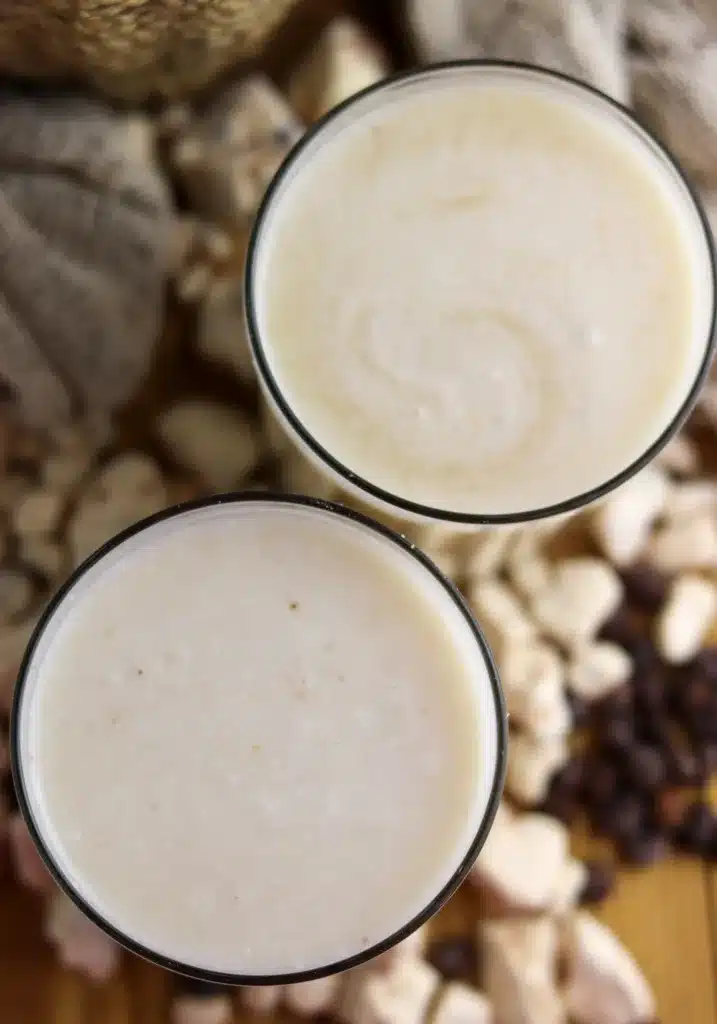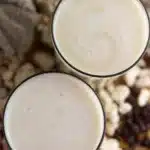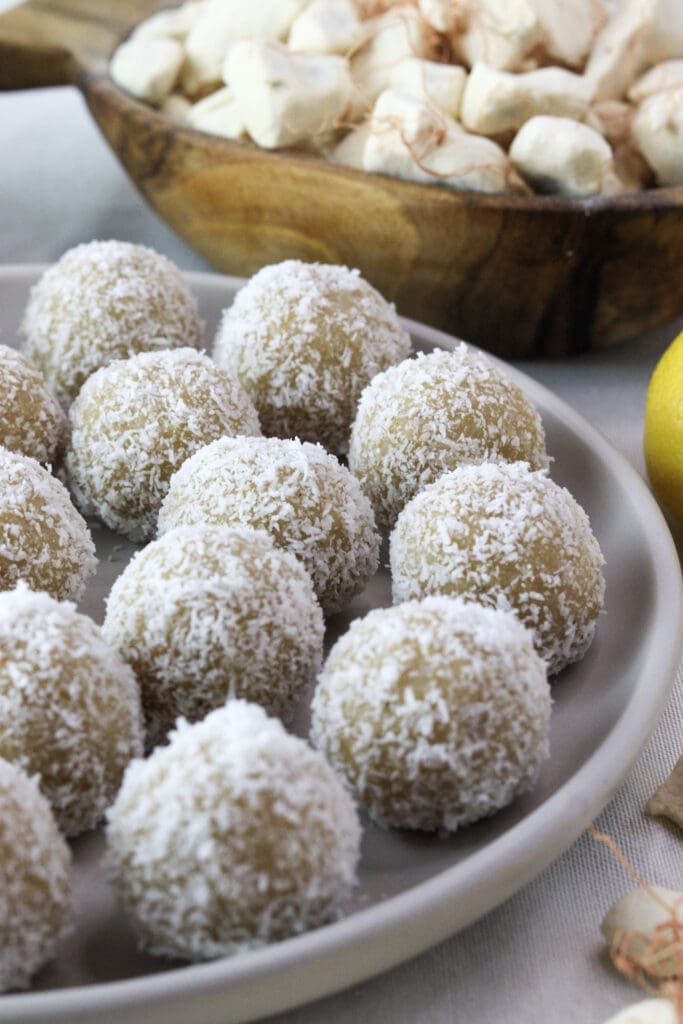So, you’re curious about baobab recipes that use the powers of the baobab tree and are packed with tangy flavor and serious nutrients? We’ve rounded up six of the best baobab powder recipes that will win over anyone—a creamy juice, healthy snacks, cookies, ice cream, you name it. These recipes are mostly sweet, always easy, most of them are gluten-free and absolutely worth a try.
And if you’re lucky enough to have the whole fruit pulp, keep the seeds! We’ll walk you through making a cup of nutty, chocolate-tasting baobab coffee, too.
Meet the amazing baobab – Africa’s superfruit star

The baobab (Adansonia) is among the most remarkable trees in the world, often referred to as the “upside-down tree” because of its root-like branches that stretch toward the sky. Certain specimens are estimated to be over 3,000 years old. Structurally, baobabs are actually large succulents: their swollen trunks act as water reservoirs, storing thousands of liters to withstand prolonged drought.
In many cases, older trees develop hollow trunks, which have not only been used as shelters for animals, but also have a few quite creative uses – like barns, dwellings, pubs, jails, post offices and even bus stops.
Culturally, baobabs occupy a central role in African traditions and belief systems. Many communities regard them as sacred, associating the trees with ancestral spirits. Folklore surrounding the baobab is quite amazing: legends warn that plucking a flower may attract lions, seeds soaked in water are believed to protect against crocodiles, and small boys bathed in baobab water are thought to grow stronger. Villages have historically formed around large specimens, reinforcing their social and spiritual significance.
The uses of the baobab are many. The fire-resistant bark is harvested for rope, fishnets and cloth production. Leaves are consumed fresh as a vegetable, dried into medicinal preparations, or used as livestock fodder. Seeds are a valuable resource of baobab oil, fermented into Maari (a condiment in West Africa and Burkina Faso) or roasted to produce a delicious baobab coffee with chocolate-like flavor. Interstingly, the fibrous pulp can even be processed into paper and sacks, while the tree’s sap can be converted into adhesives or soap.
The fruit pulp is nutritionally the most valuable. It naturally dries inside the pod, producing a fine powder that’s widely used in recipes. This powder is exceptionally rich in vitamin C, dietary fiber, prebiotics, and antioxidants, along with polyphenols known for their anti-inflammatory effects. Besides that, it also provides essential minerals like calcium, potassium, and magnesium. Often referred to as a superfruit powder, it’s most often processed to make a refreshing juice and increasingly used in modern health supplements and foods.
So, what can you actually make with baobab? As you enjoy these recipes, let them be a celebration of the magnificent baobab — a tree of magic, a tree of life, and a tree worth protecting.
1. Baobab Juice

A delicious baobab juice is made with organic baobab pulp and powder, blended with coconut milk and a banana for extra creaminess. You can taste it on its own, mix it with other fruit juices, freeze it into ice cubes, or turn it into a refreshing smoothie or ice cream. An ageless pioneer among baobab recipes, this juice is really simple to make, versatile, and full of fantastic health benefits.

2. Homemade Baobab Coffee

Baobab coffee is a healthy, flavorful alternative to regular coffee. It’s naturally low in caffeine, packed with antioxidants, and rich in healthy fats, vitamins, and minerals. In fact, its caffeine content is even lower than decaf, which means you can enjoy a cup anytime—morning, afternoon, or evening—without worrying you won’t be able to sleep.
Traditionally, this coffee is made by roasting baobab seeds. So, if you’re making baobab juice from the whole fruit pulp, don’t throw away the seeds. Roast them instead and turn them into the most delicious baobab coffee!

3. Coconut Baobab Bites

These little coconut baobab bites are a simple but a super tasty snack you’ll make on repeat. With just a few simple ingredients—cashews, shredded coconut, baobab powder, honey, and a hint of lemon zest you get tangy, delicious sweet balls that will absolutely steal your heart.
They’re quick, fuss-free, and totally wholesome. No oven, no flour, and these snacks won’t raise your sugar levels either. Just toss everything into a blender, roll into balls, and they’re ready in about 15 minutes. A recipe that uses coconut milk makes them light, creamy and absolutely gluten-free while each bite is full of nutrients from the superfruit powder.

4. Lemon Baobab Thumbprint Cookies

Lemon baobab thumbprints are everything you want in a cookie—crumbly, buttery, and filled with a bright, tangy lemon curd that feels like a bright, sunny day. A little dusting of powdered sugar on top makes them extra pretty, but baobab powder is actually hidden in the dough for an extra citrus kick and a sneaky superfood boost.
Perfectly balancing the sweet and tart this is one of the best baobab recipes you’ll ever try. Soft baobab cookies melt in your mouth, while the lemon curd filling adds just the right lemon burst. They’re easy to make, fun to bake, and so irresistible they’ll be gone before you even notice.

5. Baobab Energy Bars with White Chocolate

Instead of flower, these baobab energy bars are made with cashews, almonds, shredded coconut, and a good dose of baobab fruit powder. The tangy baobab pairs perfectly with the creamy nuts and coconut. And when you think it can’t get better—a smooth layer of white chocolate ties it all together.
Rich in vitamin C, E, and B, calcium, magnesium, copper, antioxidants, protein, and healthy fats, they are ultra nourishing and ideal as a quick snack, a pre- or post-workout boost, or even a sweet little pick-me-up in the afternoon. Easily transformed into a keto-friendly snack, full of prebiotic fiber, and ready before you know it.

6. No-churn Baobab Ice Cream

If you’re craving a cold, refreshing baobab dessert, this no-churn baobab ice cream is what you’re looking for. Made with whipping cream, coconut milk, condensed milk, and a scoop of baobab fruit powder, it comes packed with vitamins, minerals, and antioxidants. And you don’t even need an ice cream maker to make it!
This baobab recipe is egg-free by default, and with a couple of easy swaps—like plant-based cream—you can make it fully vegan. No artificial additives, no weird ingredients, just pure, simple ice cream with a precious baobab boost.

7. Baobab Smoothie with Ginger and Honey

If you want something healthy and refreshing, this baobab recipe blends sweet tropical fruits with creamy yogurt, fresh ginger, a touch of turmeric, and a generous scoop of baobab powder. It’s bright, aromatic, and loaded with vitamin C, fiber, and antioxidants. A true superfruit baobab smoothie that wakes you up and keeps you strong all day!

Baobab recipes FAQs
In South Africa the baobab is called kremetartboom (“cream of tartar tree”), because the fruit pulp was once mistaken for cream of tartar. For a long time, people believed baobab powder was cream of tartar, but in fact, it’s only it’s substitute. True cream of tartar is a byproduct of winemaking, made from tartaric acid crystals that form in barrels, scientifically known as potassium bitartrate.
For most people, baobab powder is completely safe and very healthy. It’s rich in vitamin C, fiber, and antioxidants. However, because it’s high in fiber, too much at once can upset a sensitive stomach. Also, pregnant or breastfeeding women should check with a doctor before using high daily amounts.
Absolutely! Frozen fruit works perfectly. Just toss the baobab powder, yogurt, ginger, turmeric and honey together with the frozen fruit in the blender, pulse for a few minutes, and you’ve got a refreshingly cold smoothie, great for hot summer days.
Although baobab powder’s tangy, citrus-like flavor is milder than lemon, it works beautifully in smoothies, dressings, marinades, and baked goods. It adds a fresh, citrusy note that brightens any recipe.
Yes! Baobab powder is plant-based and vegan-friendly.
Baobab powder comes from the fruit of the baobab tree, which grows naturally across Africa. It’s especially common in countries like Senegal, Ghana, Kenya, Malawi, and South Africa. Baobab trees also grow in Madagascar, parts of Arabia, and northern Australia.
You can find plenty of baobab recipes online, from smoothies and juices to cookies, snacks and energy balls. Pinterest is especially great— you’ll find a lot of creative recipes there, easy how-tos, and inspiration for using baobab powder in both sweet and savory dishes. Just search baobab recipes and you’ll have more ideas than you can try in a week!
If you made any of these delicious recipes, let us know! Drop a comment below — we’d love to hear what’s your favorite baobab treat!
And hey, please do hit that share button and spread a little baobab love. ❤️

